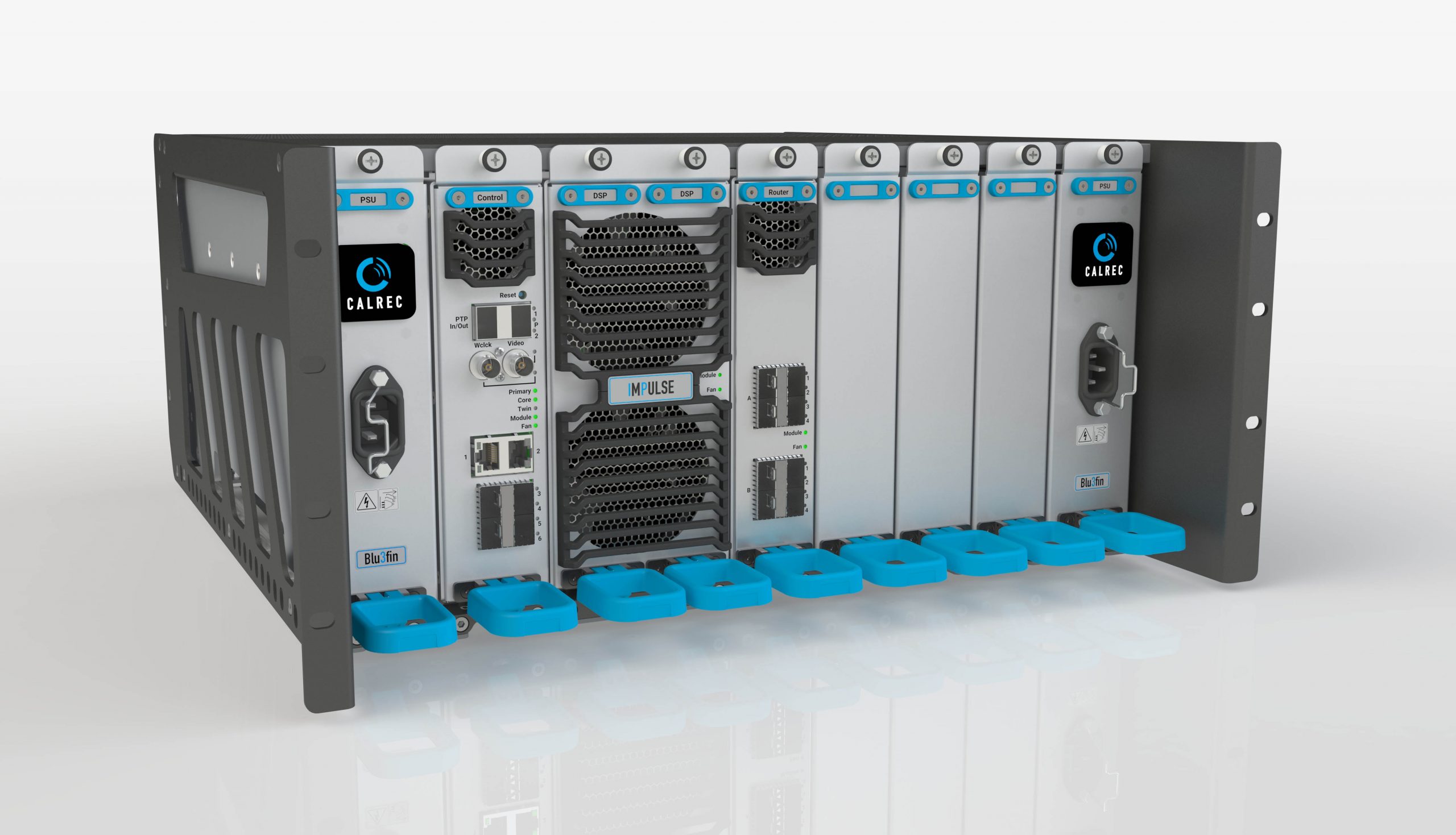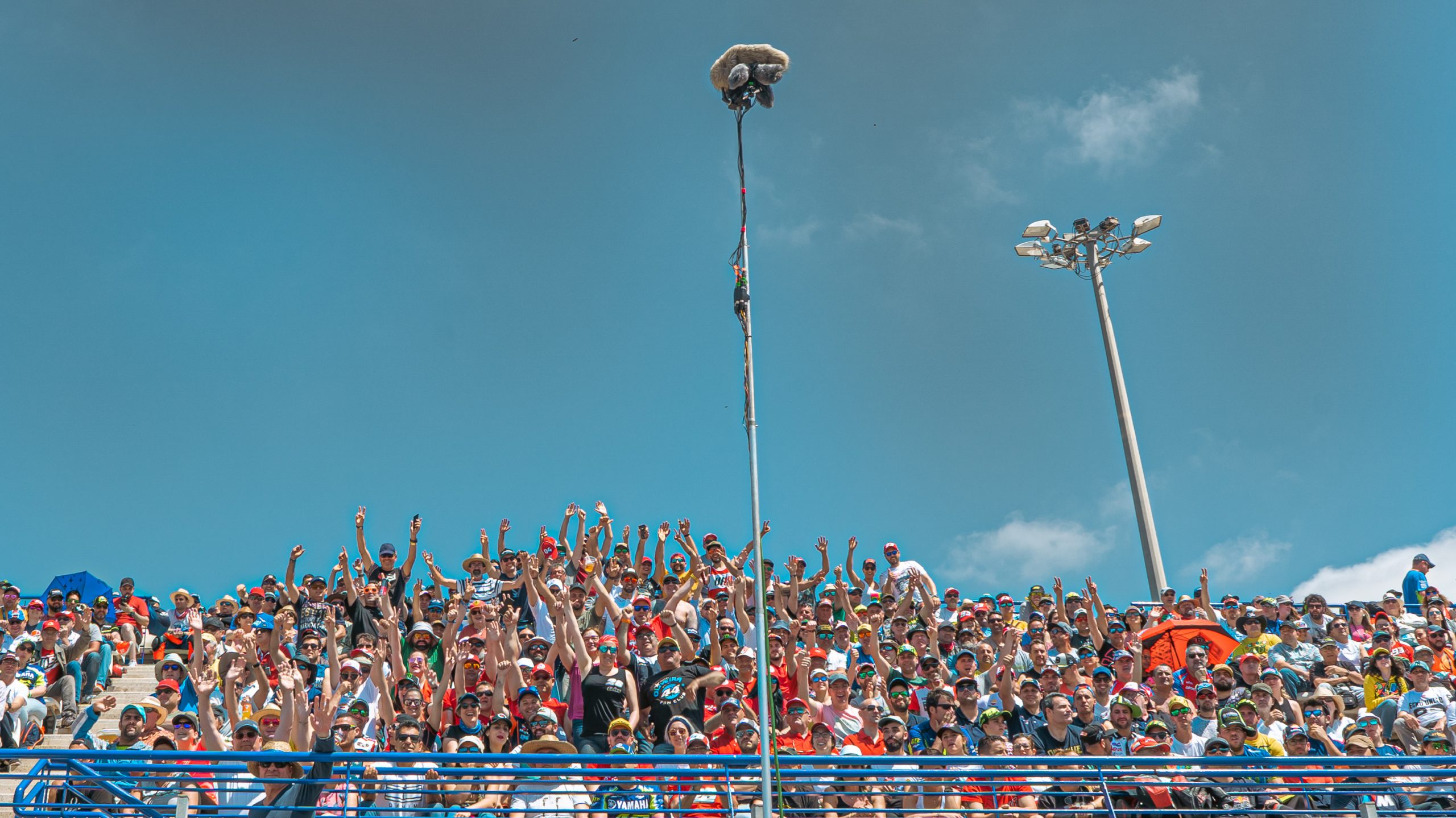NAB 2022 in Review: Audio Continues Its Trek Toward an IP Future
Innovations and combinations, some spurred by COVID, abounded on the show floor
It was almost like old times: thousands of convention attendees strolling the aisles of the Las Vegas Convention Center, exhibitor booths enticing them with brightly lit product demos, and a steady thrum of conversation suggesting that broadcasting was nearly back to business as usual. Part of that conversation suggested that the broadcast-audio industry is ready to turn a corner.
In-Person Once Again

In a demo of remote production, Calrec showcased a network with an ImPulse core unit running three consoles.
“It’s good to be back at a show,” said Calrec VP, Sales, Dave Letson. At the company’s booth, he oversaw a complete network in which three discrete consoles — a 48-dual-fader Apollo console, a 40-fader Artemis console, and a headless console running Calrec Assist on a PC — were controlled from a single ImPulse core unit. It was a demonstration of the kind of remote-production deployment that became common under COVID lockdowns.
“The pandemic provided a lot of momentum towards remote production, which these systems support,” he noted. “But other forces were also at work, including cost savings and the shift to IP. These developments here also support that.”
Sennheiser used its booth’s infrastructure to make a point. It doubled as a demo platform for sister company Neuman’s new K150/AES67 monitor. The booth’s scaffolding supported a 5.2.4 array of new 6.5-in.-driver speakers, playing back a live Dolby Atmos VR mix, with a KH750 subwoofer used as the LFE channel.

Audio-Technica’s new 8.0 Microphone Concept immersive system has already been deployed on sports broadcasts.
Audio-Technica was looking back, celebrating its 60th anniversary this year, but it was also looking ahead, displaying its new 8.0 Microphone Concept, a discrete eight-channel immersive system that has already been deployed on several sports broadcasts.
“We had a lot of good feedback from sports networks in the process [of developing it],” said A-T Product Manager Gary Dixon, adding that it’s a vanguard product for the coming 5.1.4 immersive era of broadcast sports.
Confronting Challenges New and Old
Some of pro audio’s nemeses were still evident. For instance, providing a rundown of CrewCom’s new CB2 Professional wireless intercom system, a full-duplex solution available in both 900 MHz and 2.4 GHz frequency options, Pliant Technologies VP of Global Sales Gary Rosen pointed out, “It’s still a battle for spectrum out there.” Proving the point, CrewCom’s gear is being deployed for the NFL Draft, taking place in Las Vegas this weekend.
As broadcast audio moves deeper into an IP environment, the ST 2110 standard, which describes transport of digital media over a network, and its numerous “dash” supplements take on greater importance. ST 2110-7, which focuses on signal-path redundancy, was mentioned often by exhibitors, using its “dash seven” shorthand moniker. Riedel VP, Strategic Accounts, East, Phil Stein, for instance, noted that his company’s Bolero system, which will be used for the 2023 XFL season, emphasizes the importance of the -7 component in intercom deployment. (The company also won the unofficial award for best press-kit: a QR code imprinted directly onto an apple.)
Meanwhile, TSL showed an expanded version of its SAM-Q audio monitor encompassing -7 and -30, the latter developed specifically to make audio as compatible as possible with video.
The -7 component is germane to Audinate’s new Dante Studio, a platform solution for advancing audio- and video-production capabilities. The first tool on the platform, Dante Video RX, enables Windows PCs to receive video from any Dante AV-enabled source. According to Audinate Chief Marketing Officer Joshua Rush, it’s a critical phase of building out the Dante AV ecosystem: “Dante Video RX completes the end-to-end video workflow.”
However, the move to IP means more reliance on silicon chips, and that has been a major stumbling block for audio manufacturers. Audinate’s response, according to Rush, has been to adapt its platforms to accommodate a wider range of chip types and to leverage Dante’s considerable licensed-manufacturer base as an entity, enabling efforts to use that scale for better supply access. Noted DiGiCo Business Development Manager, Sports Facilities, Dan Palmer, some manufacturers serendipitously stockpiled the FPGA chips their digital consoles require ahead of the supply-chain disruptions.
The pandemic brought about useful collaborations, one of which was evident on the show floor. Both Q5X and Shure displayed the synergy of the pairing of Shure’s Axient Digital wireless system with Q5X’s PlayerMic transmitter. Shure Senior Market Development Specialist Ben Escobedo noted that uptake of Shure’s Axient Digital line was enhanced by its pairing with Q5X’s PlayerMic and CoachMic systems for broadcast-sports applications: “That strategic partnering has helped further boost our footprint in sports.” Responded Q5X CEO Paul Johnson, “I love hearing that! It really is a great collaboration.”
COVID’s exigencies also prompted numerous audio innovations. Speaking of how Digigram’s IQOYA series of IP codec solutions was expanded over the past two years, Digigram Director of Sales Derek Badala noted, “The pandemic really supercharged their development.”
When the NAB Show returns to the Las Vegas Convention Center April 16-19, 2023, it will be, notably, the event’s centennial. The very first NAB Show was held in 1923 in New York City.

